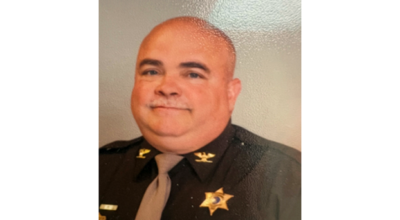Teams forming for FIRST LEGO league
Published 8:12 pm Sunday, May 4, 2014
FIRST (For Inspiration and Recognition of Science and Technology) LEGO League teams find out what the future of learning is in the 2014 World Class Challenge.
More than 230,000 children ages 9 to 16 (9 to 14 in the United States, Canada and Mexico) from more than 70 countries will redesign knowledge-gathering for the 21st century.
Registration for the upcoming September-November season begins
May 5.
Teams of up to 10 will teach adults about ways kids need and want to learn.
Each year FIRST LEGO League teams build and program a robot using a kit, solve a real-world question and compete using FLL core values, such as “coopertition” to stress it’s about more than winning.
“Fierce competition and mutual gain are not separate things,” Andrew Dohm said. “We want them to be competitive, but not at the expense of other people.”
“I want to use whatever resources we have (at Southwestern Michigan College) to help,” Dohm told an FLL informational meeting April 26 in the event theatre of the Student Activity Center in the Charles O. Zollar Building on the Dowagiac campus.
“I created a STEM Club to champion science, technology, engineering and math internally and externally. I think (FLL) could also help us get kids excited about math and science. We have coaches, team members and community members here to show what we’ve learned and help in any way to create teams of your own to give kids exposure to opportunities.”
Dohm, in his 14th year teaching math and physics, the day before won the first fulltime faculty SMC Employee of the Year award.
An engineer by education, the Edwardsburg resident worked in the automotive industry before entering the classroom.
“I got involved in (FLL) last year,” Dohm said . “I met Kristie Bussler of the Pokagon Band and found out they also have a team, so we’re putting our teams together. We thought it would be good to spread the word of what a great program this is and what it has to offer kids in our area. We were surprised there were only two teams in Cass County.”
“STEM is very important for us as a nation and our global economy,” Dohm said. “They’re not individual components. They work together. Math gets a bad rap: ‘What am I going to use algebra for?’ Algebra is a language we need to be involved in science, technology and engineering. I promote math as the glue that holds pieces together.”
STEM offers high-salary, relatively recession-proof positions.
“That’s where jobs are going to be,” Dohm said. “There’s growth because there are a lot of problems we need bright minds to solve in energy, transportation and communications. Everything that can be automated or digitized will be. What’s left is high-end engineers, programmers, doctors and scientists who drive innovation and creativity and low-end service jobs. I get students who have trouble answering what they get excited about and enjoy doing. It’s okay to not know what you want to do. What’s not okay is to not try to figure it out.”
Dohm said, “(FLL) is ‘sport for the mind.’ We celebrate football and basketball, which is great, but this is an academic sport. What I like from a STEM educator’s perspective is there are so many pieces to get them career-ready for the 21st century. The LEGO robot is programmed to be autonomous based on your commands. Games last 2 ½ minutes. The robot earns points completing as many missions as possible. In competition, there’s an arena, a scoreboard, penalties and judges. Each year there’s a project theme — 2013 was Nature’s Fury. The team was tasked with coming up with an innovative solution: How are you going to help people stay safe or rebuild as the result of a natural disaster?”
For research, the barn loft-based Eddy Currents (named for a phenomenon in electromagnetism) interviewed WNDU-TV NewsCenter 16 Chief Meteorologist Mike Hoffman and Cass County Emergency Management Homeland Security Coordinator David L. Smith.
“You’re not talking about a huge monetary investment,” Dohm said. “Your first year you have to buy a robotics kit for $425, but that’s a one-time cost. Each year, at the end of August, the FLL releases the challenge mat and models. That was $375. There are grants available. YouTube is an excellent resource. The guy who designs the challenge shows each mission. Through the season, teams post videos showing how they tackle challenges.”
Regional competition for two dozen teams occurred last November in Zeeland.
The consistent Currents were one of seven to qualify for state.
“I would love to get enough teams in this area to host a tournament at the college,” Dohm said.







